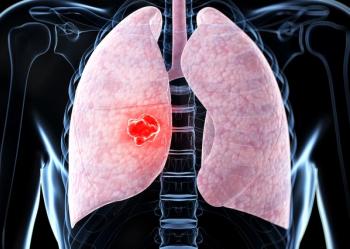
Oncology NEWS International
- Oncology NEWS International Vol 11 No 6
- Volume 11
- Issue 6
Cardiac Exercise Rehabilitation Program Can Be Adapted for Cancer Patients
SAN ANTONIO, Texas-An exercise rehabilitation program similar to that used for cardiac patients significantly improved both exercise tolerance and quality of life (QOL) for cancer patients participating in a pilot study. Stacey Young-McCaughan, RN, PhD, and colleagues tested the exercise program in patients at two military medical centers in San Antonio, Texas. Lieutenant Colonel Young-McCaughan is deputy director of the Congressionally Directed Medical Research Programs at the US Army Medical Research and Materiel Command at Fort Detrick, Maryland.
SAN ANTONIO, Texas-An exercise rehabilitation program similar to that used for cardiac patients significantly improved both exercise tolerance and quality of life (QOL) for cancer patients participating in a pilot study. Stacey Young-McCaughan, RN, PhD, and colleagues tested the exercise program in patients at two military medical centers in San Antonio, Texas. Lieutenant Colonel Young-McCaughan is deputy director of the Congressionally Directed Medical Research Programs at the US Army Medical Research and Materiel Command at Fort Detrick, Maryland.
"Often when patients are first diagnosed with cancer they are told to rest. However, over 40 studies have shown improved QOL with exercise in patients with cancer," Dr. Young-McCaughan said.
Exercise rehabilitation is seldom used in cancer patients but is standard care in cardiology, so the researchers adapted a phase II cardiac rehabilitation program for 62 patients who had been diagnosed with cancer within the previous 2 years. Patients had a wide range of diagnoses, and 15 were still undergoing cancer treatment while in the exercise study. Half were male and half were female. Most had early-stage disease. Seven were on active military duty.
Each exercise session included a warm-up, treadmill exercise, light resistance training with weights, and a cool-down. Patients also took education classes on such topics as nutrition, stress reduction, and sleep improvement. Activity levels were recorded using wrist Actigraph, which records activity levels for 5 minutes of every hour.
QOL Scores Increased
Dr. Young-McCaughan said that 46 patients (74%) completed the program and exercised about 4 days per week. In these patients exercise tolerance increased from 8% to 73% above baseline. "More than half of the subjects had exercised prior to their cancer diagnoses, but only 30% had been able to resume an exercise routine following their cancer diagnosis and treatment," she noted.
Global QOL scores also increased significantly in the patients who completed exercise rehabilitation. Only the changes in physical (not psychological) QOL subscales reached statistical significance, according to Dr. Young-McCaughan.
Patients in the study had serious sleep disruptions at baseline, averaging only about 6 hours of sleep per night and 14 nighttime awakenings. "There was no objectively measurable change in sleep in the study, but when asked, patients said they felt like they were sleeping better," Dr. Young-McCaughan said. Interpretation of this segment of the study was complicated by the fact that a lot of Actigraph data were lost, and complete sleep data were available for only 31 patients.
Feasible for Most
Dr. Young-McCaughan concluded that exercise rehabilitation is feasible for most cancer patients, noting that even 60% of patients with stage IV disease were able to complete the program. The researchers are now launching a controlled study that will examine effects on cancer patients in the 18 months after they complete exercise rehabilitation.
Dr. Young-McCaughan also pointed out two problems that occur in cancer patients but not in cardiac patients and must be taken into account in designing exercise programs. The first is lymphedema, and designing a safe exercise regimen that will not exacerbate the swelling. The second is peripheral neuropathy, which can interfere with the safe use of a treadmill.
Articles in this issue
over 23 years ago
Gleevec Effective as First-Line Therapy of CML: IRIS Trialover 23 years ago
Curcumin May Enhance TRAIL-Induced Cancer Cell Deathover 23 years ago
Symptom Clusters or Groupings Are Common in Cancer Outpatientsover 23 years ago
Allogeneic BMT Ups 5-Year EFS in Ph- ALLover 23 years ago
HIV-1 Vaccine Proving Safe, Immunogenic in Humansover 23 years ago
ACS to Fight Tobacco ‘Pandemic’ Worldwideover 23 years ago
Aspirin Helps Prevent Recurrent Large Bowel Adenomasover 23 years ago
Diagnostic DilemmaNewsletter
Stay up to date on recent advances in the multidisciplinary approach to cancer.

















































































